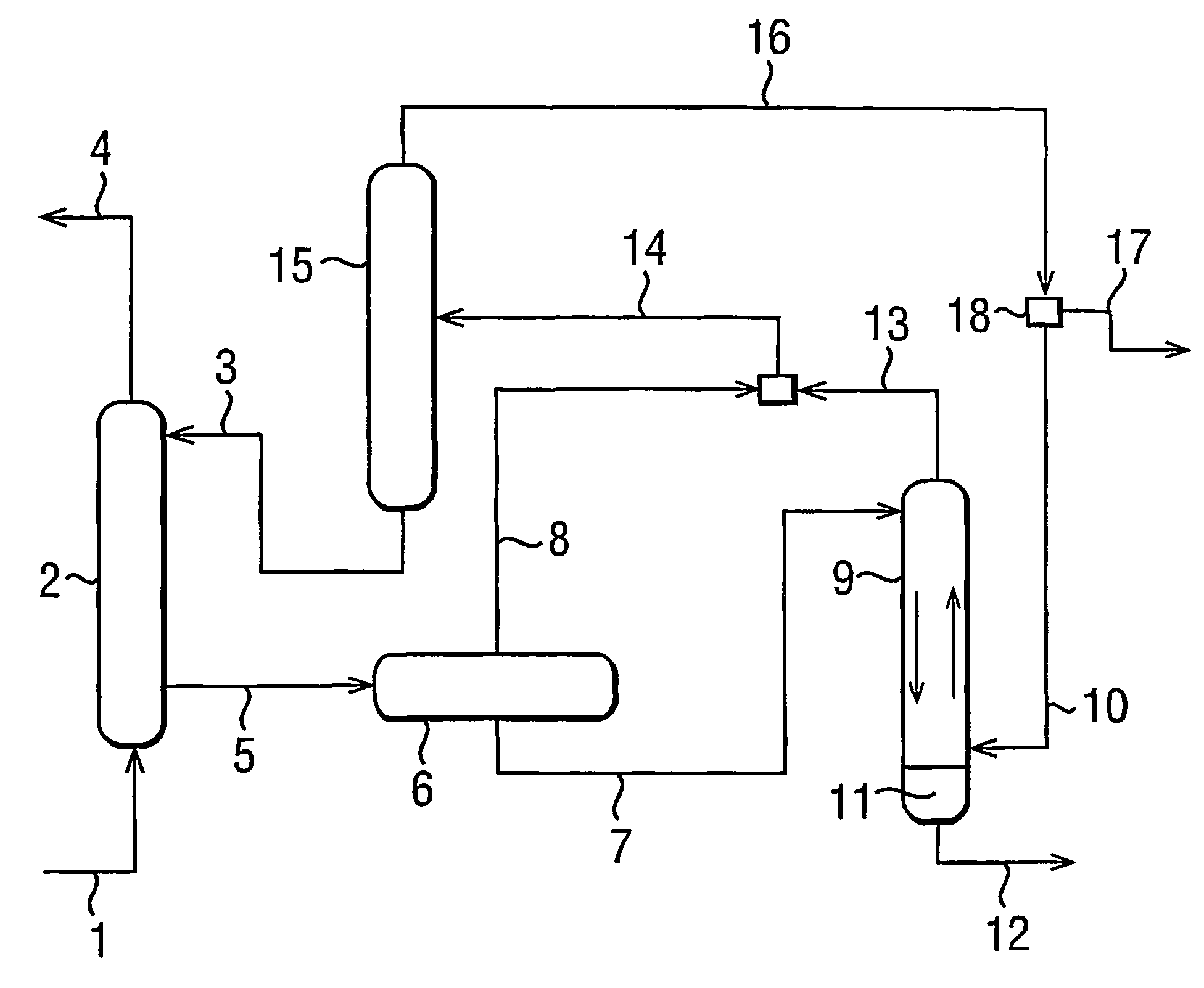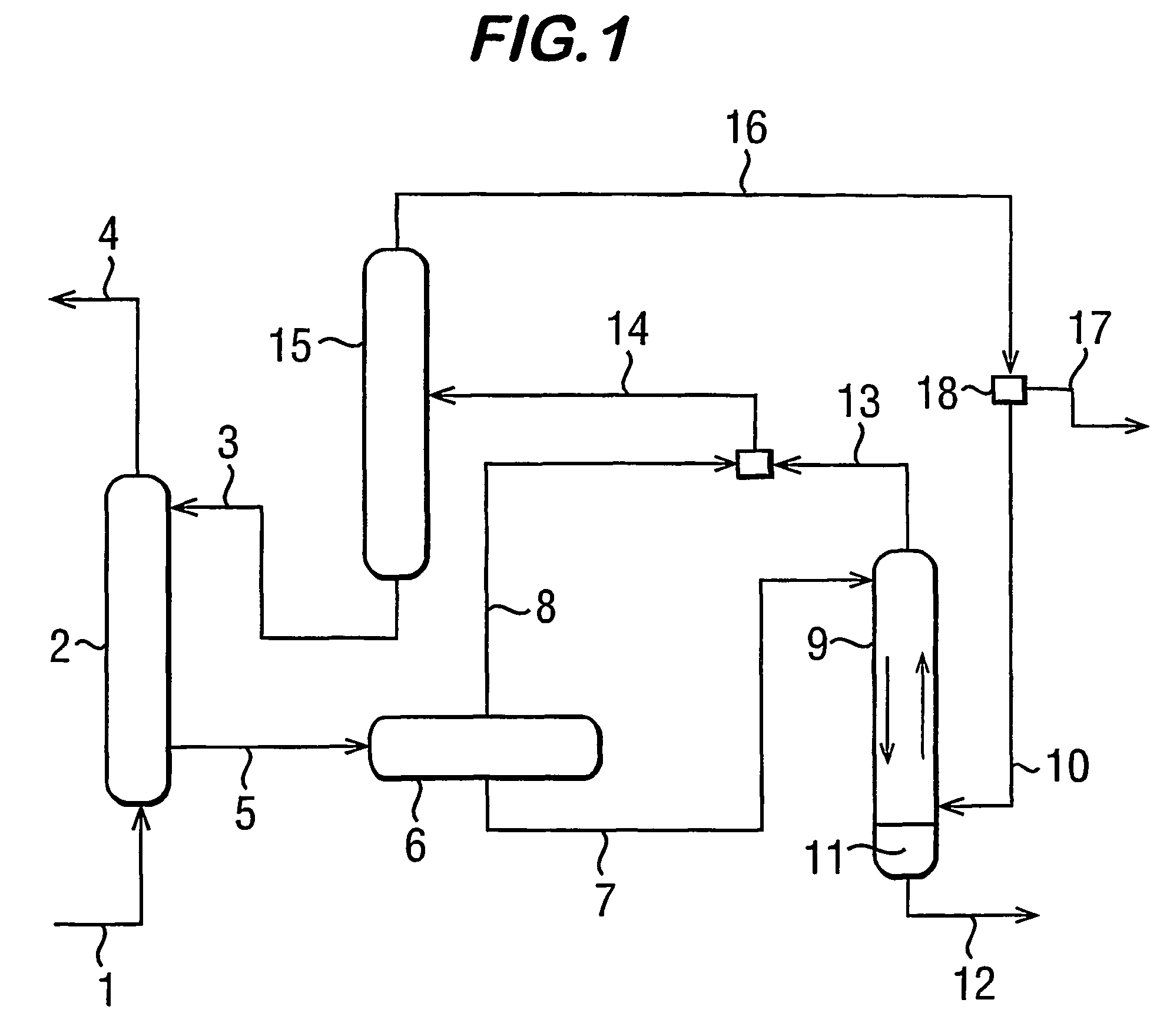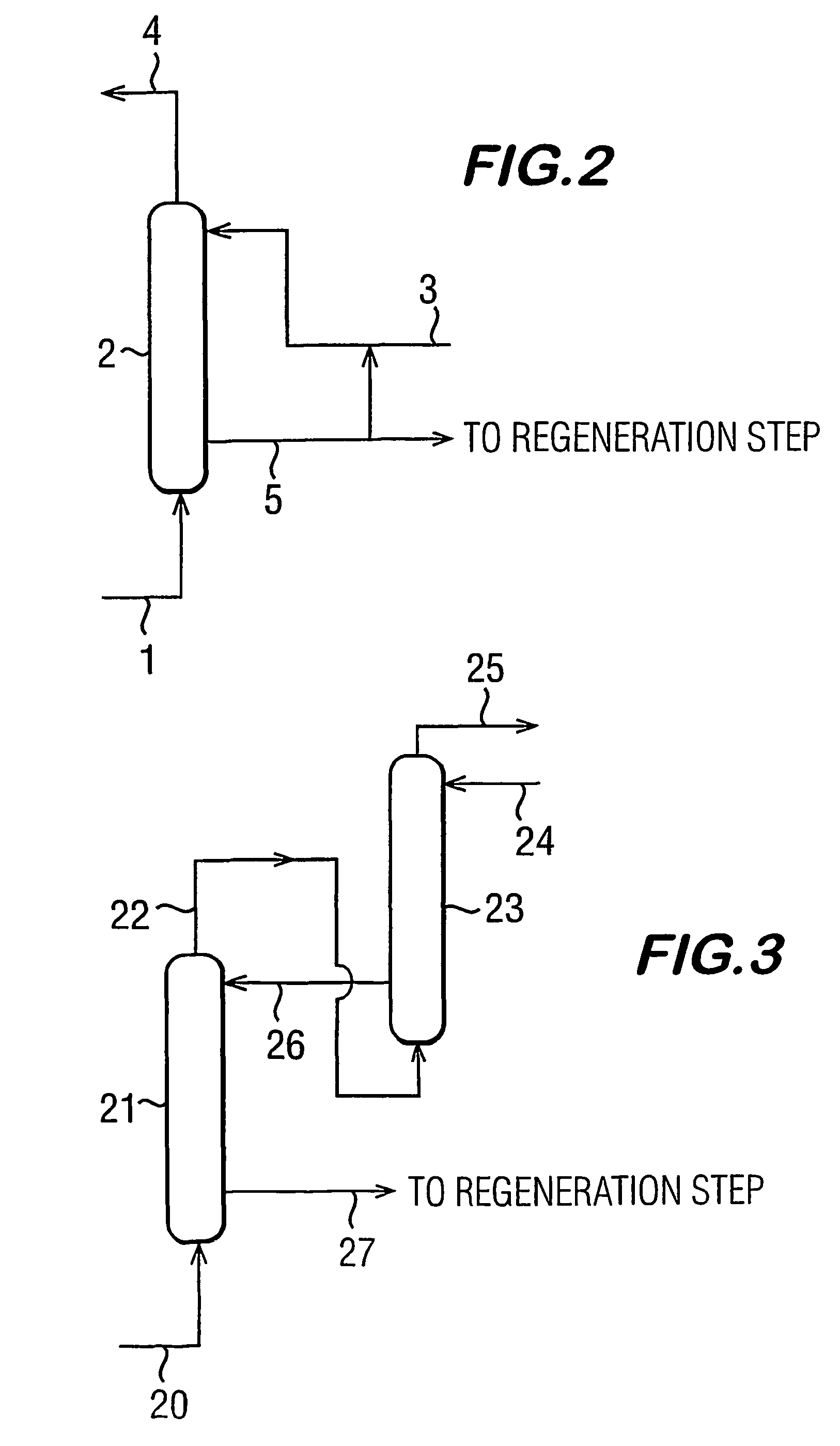Process for dehydrating gas
a technology of degasification and gas, which is applied in the direction of gaseous fuels, liquid degasification, separation processes, etc., can solve the problems of co-vaporization of aromatics, and achieve the effect of reducing the risk of formation
- Summary
- Abstract
- Description
- Claims
- Application Information
AI Technical Summary
Benefits of technology
Problems solved by technology
Method used
Image
Examples
example 1
[0049]The results given below in Table 1 show the effect of water loading on the cloud point temperature of a mixture of water and N-allyl-dimethylamine.
[0050]
TABLE 1% amine (by% water (byCloud PointAmine (g)Water (g)weight)weight)Temperature (° C.)19109057.92918.281.84839257547.55935.764.347.67943.856.247.810952.647.449.16.390.592.77.3—6.39186.513.5—6.39276.223.859.26.39461.538.550.46.39556.143.949.1
[0051]It can be seen that at water loadings of between 38.5 and 81.8% weight, the cloud point temperature remains relatively constant at approximately 50° C. and that the cloud point temperature increases dramatically at water loadings outside of this range. Accordingly, N-allyl-dimethylamine is suitable for use as a water absorbing fluid in the process of the present invention.
example 2
[0052]The results given below in Table 2 show the effect of water loading on the cloud point temperature of a mixture of water and triethylamine.
[0053]
TABLE 2Cloud Point% amine (by% water (byTemperatureAmine (g)Water (g)weight)weight)(° C.)9.90.1991—9.80.2982659.60.496438.79.50.59552091901018.582802017.473703017.864604017.75550501846406017.237307017.428208017.219109019.60.59.559532.80.49.649639.20.29.8298—0.19.9199—
[0054]It can be seen that at water loadings of between 5 and 90% by weight, the cloud point temperature remains relatively constant at between 17–20° C. and that the cloud point temperature increases dramatically at water loadings outside of this range. Accordingly, triethylamine is highly suitable for use as a water absorbing fluid in the process of the present invention.
example 3
[0055]The results given below in Table 3 show the effect of water loading on the cloud point temperature of a mixture of water and N,N,N′,N′-tetraethyl-1,2-ethanediamine.
[0056]
TABLE 3Cloud Point% amine (by% water (byTemperatureAmine (g)Water (g)weight)weight)(° C.)9.50.5955—91901014.182802025.473703025.864604026.455505026.946406028.237307028.828208031.819109038.90.59.559548.8
[0057]It can be seen that at water loadings of between 20% and 70% weight, the cloud point temperature remains relatively constant at approximately 25 to 29° C. and that the cloud point temperature increases dramatically at water loadings above 70% weight. Accordingly, N,N,N′,N′-tetraethyl-1,2-ethanediamine is suitable for use as a water absorbing fluid in the process of the present invention.
PUM
| Property | Measurement | Unit |
|---|---|---|
| Temperature | aaaaa | aaaaa |
| Temperature | aaaaa | aaaaa |
| Temperature | aaaaa | aaaaa |
Abstract
Description
Claims
Application Information
 Login to View More
Login to View More - R&D
- Intellectual Property
- Life Sciences
- Materials
- Tech Scout
- Unparalleled Data Quality
- Higher Quality Content
- 60% Fewer Hallucinations
Browse by: Latest US Patents, China's latest patents, Technical Efficacy Thesaurus, Application Domain, Technology Topic, Popular Technical Reports.
© 2025 PatSnap. All rights reserved.Legal|Privacy policy|Modern Slavery Act Transparency Statement|Sitemap|About US| Contact US: help@patsnap.com



